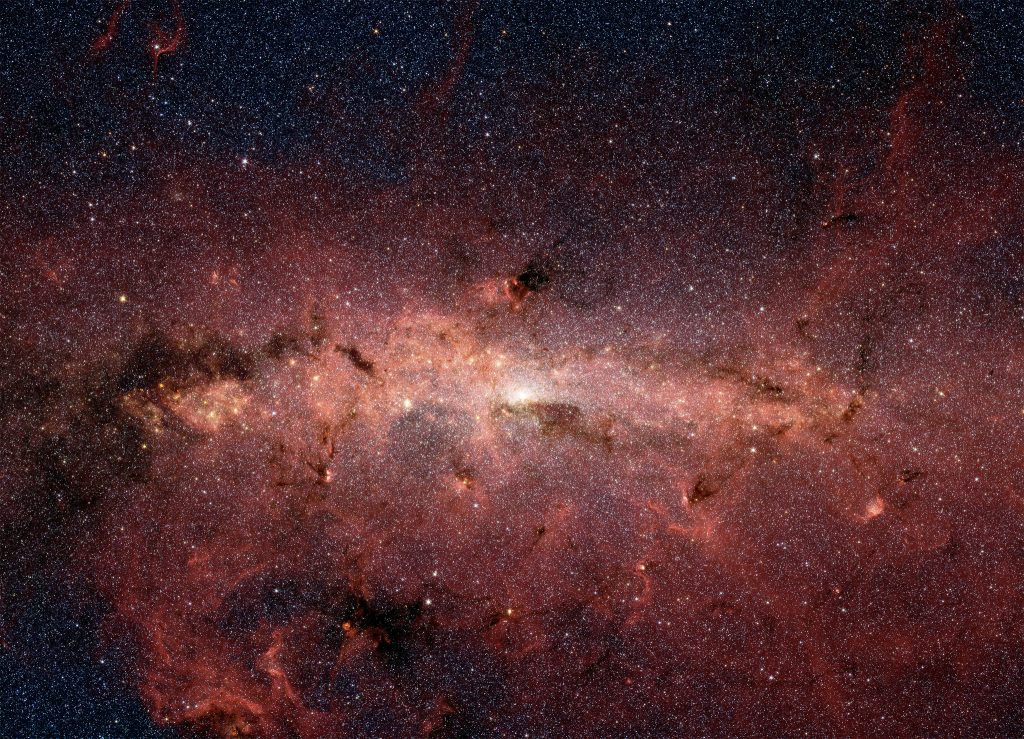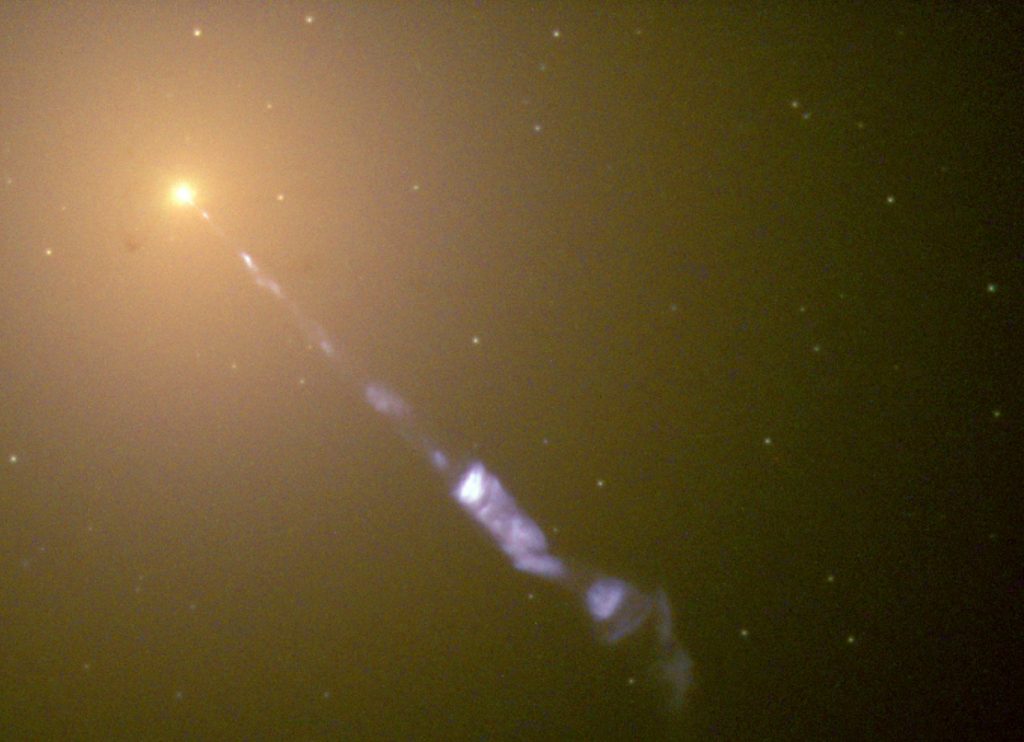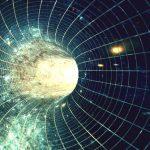Key Takeaways:
- A team of astronomers from the Australian National University has identified the fastest-growing black hole known as J2157, with a mass of approximately 34 billion times that of the Sun.
- Discovered in 2018, J2157 is the brightest quasar observed, ruling out the possibility of its luminosity being a result of gravitational lensing, and is located 12.5 billion light-years away from Earth.
- The researchers used data from the European Southern Observatory’s Very Large Telescope to determine the distance and mass of J2157, highlighting its exceptional characteristics and making it the largest quasar observed to date.
- J2157’s existence challenges our understanding of the early universe, being observed only 1.2 billion years after the Big Bang, providing valuable insights into the rapid growth of supermassive black holes during that period.
- The discovery opens avenues for further exploration, as astronomers seek more examples of supermassive black holes in the early universe to understand their impact on galaxy evolution and the cosmos as a whole.
During the 1960s, there arose speculation among astronomers concerning the potential existence of extraordinarily massive black holes within the cosmos, referred to as supermassive black holes (SMBHs), capable of energizing the cores of active galaxies, also known as quasars. Subsequently, in the following decade, astronomers made the groundbreaking discovery of an SMBH located at the heart of the Milky Way, known as Sagittarius A* (Sag A*). By the 1990s, it became evident that a significant proportion of large galaxies throughout the Universe likely harbored one of these supermassive entities.
Since then, astronomers have embarked on a quest to identify the most colossal SMBHs in existence, aiming to comprehend the extent of their massiveness. Recent research conducted by astronomers from the Australian National University has yielded a remarkable discovery—the identification of the most prodigious SMBH yet observed! Dubbed J2157, this black hole boasts a mass approximately 34 billion times that of our Sun, making it both the fastest-growing black hole and the largest quasar documented thus far.
Published in The Monthly Notices of the Royal Astronomical Society, the study was spearheaded by Dr. Christopher A. Onken, the operations manager of the SkyMapper telescope. Collaborating with researchers from the Research School of Astronomy and Astrophysics (RSAA) and the Center for Gravitational Astrophysics (CGA) at ANU, as well as counterparts from the European Southern Observatory (ESO) and Steward Observatory, the team unveiled this groundbreaking finding.

Interestingly, the same group was responsible for initially identifying J2157 in 2018, leveraging data from the Gaia observatory, the Wide-field Infrared Survey Explorer (WISE) space telescope, and the SkyMapper Southern Sky Survey. Led by Christian Wolf, a member of the Australian Research Council’s Centre of Excellence in All-sky Astrophysics (CAASTRO), their earlier study laid the groundwork for this latest breakthrough.
Previously acknowledged as the brightest quasar observed within the known Universe, J2157’s luminosity was attributed to the presence of an SMBH at its core. Furthermore, the team dispelled the notion that gravitational lensing, a phenomenon where intervening galaxies magnify brightness, contributed to J2157’s brilliance.
For their recent study, Dr. Onken and his team relied on data from the ESO’s Very Large Telescope (VLT) in Chile to determine the distance and mass of J2157’s SMBH accurately. Their findings unveiled the staggering dimensions of this cosmic behemoth, as articulated by Dr. Onken:
“The black hole’s mass surpasses that of the black hole at the center of the Milky Way by approximately 8,000 times. To accumulate such mass, the Milky Way’s black hole would need to consume the equivalent of two-thirds of all stars within our Galaxy. Remarkably, we are observing this phenomenon when the universe was only 1.2 billion years old, accounting for less than 10 percent of its current age. It stands as the most massive black hole ever measured during this nascent epoch of the Universe.”
Initial indications hinted at J2157’s possession of a rapidly expanding SMBH, engorging stars within its galactic nucleus regularly. However, the revelation that it stands as the fastest-growing SMBH merely 1.2 billion years post-Big Bang left astronomers astounded. Dr. Fuyan Bian, a staff astronomer at the European Southern Observatory (ESO), remarked:
“The rapid growth rate of this black hole hinted at its exceptional massiveness. The extent to which black holes can consume matter is contingent upon their existing mass. Thus, observing such voracious consumption rates led us to anticipate a potential record-breaking entity. Today, our suspicions are confirmed.”
Equally compelling is the insight J2157 offers into the early Universe and its subsequent evolution. Astronomers have long sought SMBHs from this primordial era to understand their influence on galactic and cosmic evolution. Moreover, they seek to elucidate the mechanisms enabling such rapid growth within a relatively short timeframe.
While these inquiries remain unresolved, the discovery of J2157, an ancient and unparalleled supermassive black hole, promises invaluable insights. The research team is currently engaged in a quest for additional black holes that thrived at galactic centers shortly after the Big Bang, hopeful that further discoveries will yield additional clues.

Dr. Fuyan Bian, a staff astronomer at the European Southern Observatory (ESO), expressed enthusiasm regarding the prospects:
“With a black hole of such immense proportions, we are eager to uncover insights into the host galaxy’s nature. Does this galaxy represent one of the giants of the early Universe, or did the black hole voraciously consume an extraordinary amount of its surroundings? Further exploration is warranted to unravel these mysteries.”
Among the most significant advancements in astronomy and astrophysics in recent decades is the capacity to peer deeper into the cosmos with unprecedented clarity. By delving into the depths of space, scientists gain access to the Universe’s formative years, enabling them to scrutinize its early stages of development. These endeavors facilitate the testing and refinement of cosmological theories concerning the Universe’s evolution and expansion.
Anticipating continued progress facilitated by next-generation telescopes, artificial intelligence, and enhanced data-sharing mechanisms, scientists remain poised to address enduring cosmological queries comprehensively.


